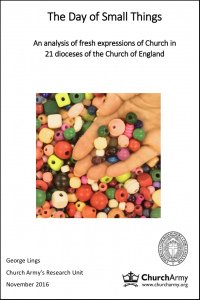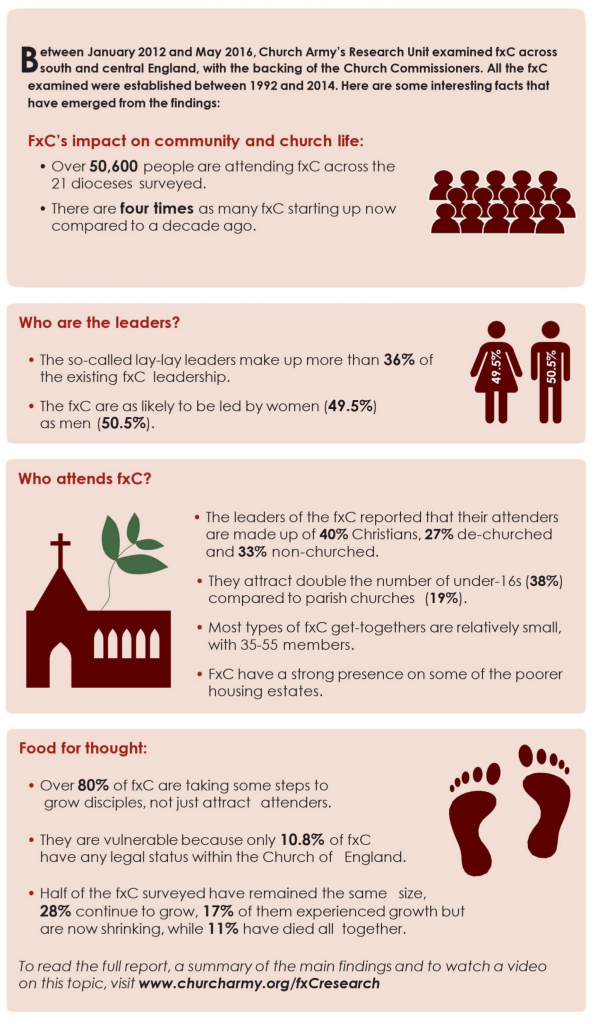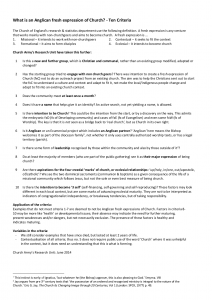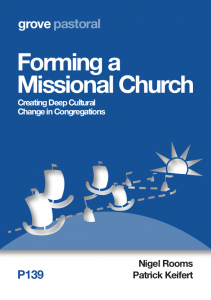Review: The Land Between – Finding God in Difficult Transitions
 I’m writing this seated under a large sycamore tree in an English country churchyard, surrounded by lush green fields, waving crops, and comfortable houses. In my time I have had quiet times in many places like this, under random trees, at cafe tables, on picturesque Tasmanian beaches, or buffeted on a mountain by cloud-bearing winds.
I’m writing this seated under a large sycamore tree in an English country churchyard, surrounded by lush green fields, waving crops, and comfortable houses. In my time I have had quiet times in many places like this, under random trees, at cafe tables, on picturesque Tasmanian beaches, or buffeted on a mountain by cloud-bearing winds.
Each place is a different context, each season is a different time, but I have found that each place has often been, spiritually speaking, a place of wilderness, a deserted place where (as I wrote to our then church many years ago) we are “laid bare before God… It is there that we are convicted of sin, assured of forgiveness, comforted, guided, and can consider the wisdom of God at work. It is there that we are matured, helped, strengthened…”
Wilderness is integral to the Christian journey. As we grow to be more like Jesus (what theologians call “sanctification”) we find that we must necessarily pass through a desert experience. These are seasons that are never easy, often protracted, and invariably marked by encounters with hurt, grief, and mortification.
I’ve recently come across The Land Between: Finding God in Difficult Transitions, by Jeff Manion, and found it to be not only a decent description of this phenomenon, but also a companion, a textual spiritual director, for those who are plodding such paths at the moment. He understands that wildernesses are crucial times, the crux of things in life.
I firmly believe that the Land Between – that space where we feel lost or lonely or deeply hurt – is fertile ground for our spiritual transformation and for God’s grace to be revealed in magnificent ways. But while the Land Between is prime real estate for faith transformation, it is also the space were we can grow resentful, bitter, and caustic if our responses are unguarded. The wilderness where faith can thrive is the very desert where it can dry up and die” (Page 19)
Manion has us reflect on the Israelite’s wilderness in the time of Moses and, in particular, focuses in on the complaints that are voiced.
One form of complaint is the bitter complaint. We all complain when the going gets tough, and the going was tough for the multitude in the Sinai desert. Even as they became recipients of daily divine manna they complained. And we can identify with their frustration: “I’m sick of this! I’m sick of this season!” It is not abstract, as Manion demonstrates, and is manifest in our own situations. It’s certainly a refrain that’s been on my lips:
“I’m sick of living in my in-laws’ basement.”
“I’m sick of being asked what line of work I’m in and fumbling for an answer.”
“I’m sick of enduring wave after wave of medical tests without a clear diagnosis.”
“I’m sick of waiting for this depression to lift.”
“I’m sick of visiting a mother in a nursing home who repeatedly asks who I am.”
“I’m sick of this manna”
(Page 36)
To illustrate the second form of complaint, Manion turns to the “exhausted rant” of Moses in Numbers 11:11-15 where he hurls forth questions like “Why have you brought this trouble on your servant? Did I conceive all these people? Did I give them birth? Why do you tell me to carry them in my arms?… If this is how you are going to treat me, put me to death right now.” Despite the volatility of it, this is faithful complaint.
This sounds more like an exasperated meltdown than a prayer. You might say it sounds a little like the complaining Israelites in some respects – the despair, the frustration, the giving up, Moses’ dismissal of his calling, the reference to death. But there is a key difference: Moses’ attitude toward God. The Israelites are complaining about God. Moses is praying to God, and this is a huge distinction… He is not spiraling into spiteful complaint but is candidly pouring his heart out to God. He has maxed out and is in over his head. He is running on fumes. (Page 65)
Every admirable person I know has been in that place. They are emotionally honest with God (page 70, page 86). Every person I know who has not yet fully entered into their calling, those who exercise leadership with a degree of immaturity, have not had this wilderness experience, they lack “experiential knowledge” (page 120) and have no words. They are unstripped, still full of themselves, unemptied, proto-kenotic, with faith soft and untested.
In response to faithful complaint, Manion paraphrases God’s heart:
“See you’re not alone. Some of my choice servants have felt intense failure and frustration. This is how they prayed when they felt empty and exhausted, and this is how I Invite you to pray. My shoulds are strong enough to absorb rants like this. But please speak! Cry out! Face me and give voice to your fatigue, your pain, your betrayal, your vast disappointment. Turn toward me and begin the conversation, even if it’s raw and ugly.” (Page 74, emphasis mine)
Wilderness brings us to the crux and puts before us the question that clarifies faith (page 55): Who will we trust? Who will we trust with our past? Who will we trust with our future (page 52)? Will we attempt to take over and control? Or will we learn to bring ourselves to the presence and leadership of God? The wilderness doesn’t just teach faith, it grows it. In the wilderness, “God demonstrates that he is a capable provider for his people. What is he attempting to teach them as he leads them into dire hardship? ‘I am worthy of your trust. You need to learn to depend on me’” (Page 44).
The complacent avoid it. The bitter resent it. They turn from God: “We were better off without you as our rescuer, we were better off without your presence, we were better off as slaves… This is serious.” (Page 138). And it is real. I have seen people echo this sentiment in their lives, in their churches!
But in his leading Moses and his people through the valley of death, God isn’t capricious or attempting to build a co-dependency. He is growing them, making them ready. He is maturing them, strengthening them. “Once they enter the Promised Land, they are going to have to resist looking to the likes of the god Baal for water, food, and survival” (Page 45). The wilderness is necessary for them to be the people of God, distinct and reflecting his life-giving ways.
The fruit of faith is life’s vocation: As the power of self-centredness dies in the desert, the power of sin, the ways of the world in maintaining and holding on to power and self-security, loose their grip. We learn to “cast our cares on the Lord” (page 83), where their hold and power on the soul is extinguished. We cast our cares as we learn to ask “How long, oh Lord?” (Page 84).
I only have one issue with Manion’s exposition and application: At times we get a whiff of a positive thinking gospel:
“A heart of bitter complaint is anchored in the suspicion that God is stingy – that he will hold out on you. But a heart of trust is anchored in the belief that God is good and will provide for you out of an inexhaustible reservoir of generosity. Your expectation of God’s provision will prove a determining factor in whether the Land Between results in spiritual life or spiritual death. Your trust in his future goodness keeps hope alive as you journey through the desert” (Page 99).
There is truth in this statement: Yes, faith holds to the goodness of God’s character. However, we cannot make that faith contingent on having needs (or even wants) met according to expectation. Yes, we can hold to the eventual generous provision of the Promised Land of eternal life. But the heart of faith is not, “I will trust in God because he will eventually give me what I cry out for”, rather as with Job, “Even though he slay me, yet will I hope in him.” His ways are perfect, even if they are beyond understanding, or have only the rich and healthy received the fruit of their faith?
Gill and I spoke with a wise, older, vicar recently. He was describing his breakdown, the wilderness that he had experienced in a season in his life. And he said words to this effect: “I’ve learned to turn towards the pain. I don’t like it, I don’t want to. But only there is life, when God works in my weakness, and there is fruit in the labour.” For better or for worse, Gill and I have glimpsed what he means. Our resolve is to not waste the pain. To turn towards it and to trust God even when all appears as despair and abandonment. To do otherwise is to slip into bitterness, or to reach again for the numbness of worldly torpor.
Manion quotes Yancey, “Life is difficult. God is merciful. Heaven is sure.” (Page 175). I would add to that the words of the incomparable John Schlitt who looks to the cross and sings, “I know who I am, I know where I’ve been, I know sometimes love takes the hard way… For now, forever, I take my stand, I place my whole life in Your hands…”
I know who He is, I know where He’s been, I know that love takes the hard way.












